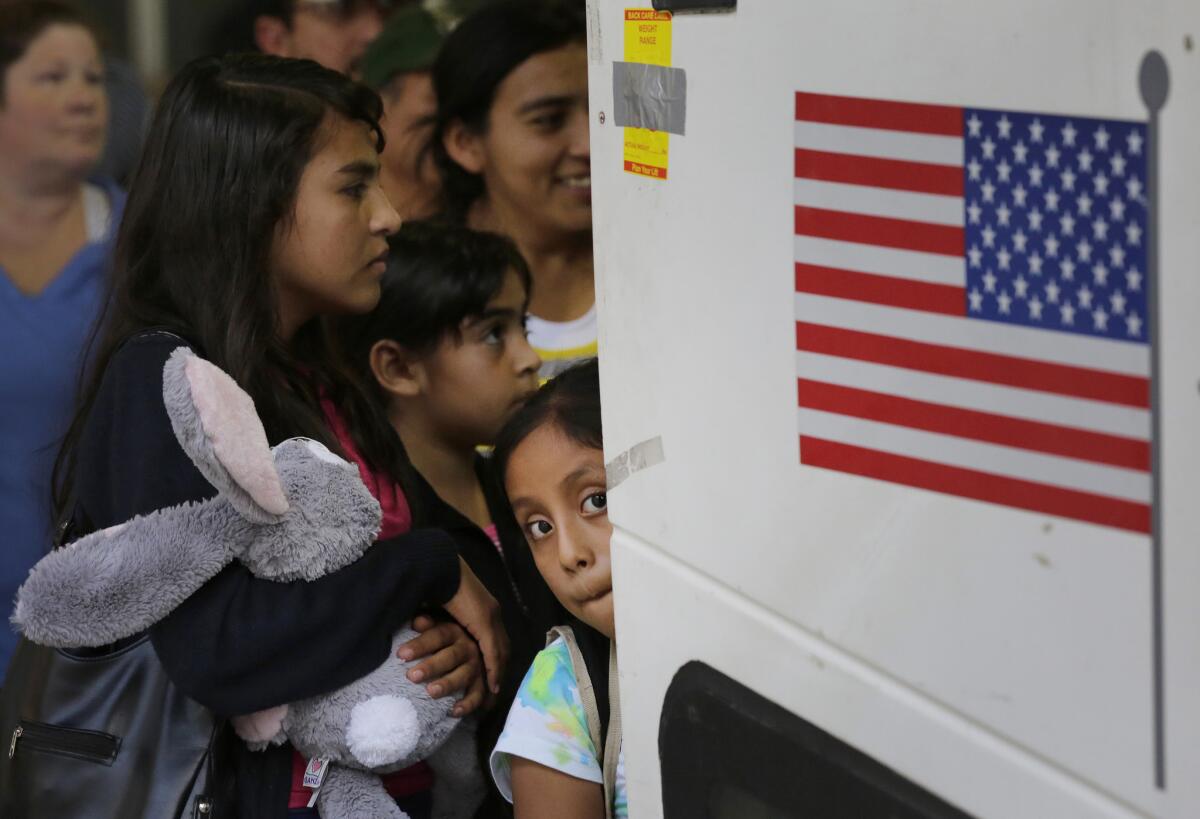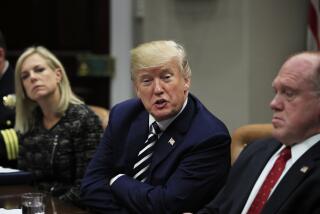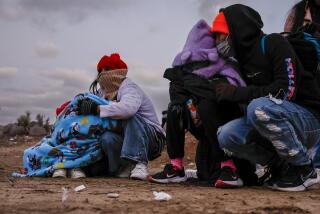U.S. officials say they are highly confident to have reached tally on separated children: 4,368

Immigrants from El Salvador and Guatemala who entered the country illegally board a bus after being released from a family detention center in San Antonio, Texas on July 7.
Attorneys are still trying to reach hundreds of parents of separated children as part of San Diego litigation
SAN DIEGO â U.S. officials assured a San Diego federal judge on Friday that they are highly confident that they have accounted for all of the children who were separated from their parents under the Trump administrationâs short-lived âzero-toleranceâ policy and precursor programs.
The total tally: 4,368.
U.S. District Court Judge Dana Sabraw has been at the forefront of that accounting effort since 2018, but he raised new concerns over whether it was complete after a November report by the U.S. Office of Inspector General. The report suggested that government computer systems had made it impossible to reach an accurate tally.
But officials said this week that the effort to count the separations under Sabrawâs court order relied on more varied sources of information and included manual examination of thousands of records.
The effort under Sabraw happened in two stages. The first focused on children in government custody as of June 26, 2018, which came to 2,812 (three additional children have been determined not to have been separated after being initially counted.)
When it was later revealed that the Trump administration had been separating families in certain border cities as early as July 2017 as part of a pilot program, an effort to tally those separations launched. It was a more challenging prospect, since the children involved were no longer in government custody. Each possible case file was examined by hand â twice â and verified through various agency databases.
That tally came to 1,556 children, according to court documents filed this week.
Cmdr. Jonathan White at the U.S. Department of Health and Human Services, who oversaw the second count, called the process âvery painstakingâ and told the judge Friday that he had high confidence that all separated children had been accounted for.
Beyond quantifying the separations, Sabraw ordered the government to help track down the separated parents and give them the option to reunite with their children. That effort has largely been completed as to the first group, but attorneys and nonprofit workers are continuing to track down parents of the second group, many of them in Central America.
So far, in the course of more than 47,000 phone calls, the lawyers have been able to reach 364 parents or their attorneys. Additionally, on-the-ground efforts by the nonprofit Justice in Motion has contacted 113 parents outside of the U.S., said New York-based attorney Steven Herzog, who is heading the steering committee working on the task.
Lawyers have also launched a letter campaign and established toll-free hotlines in key countries to try to establish contact with more parents.
Earlier this week, Sabraw declined to expand the scope of the family separation litigation by intervening in the governmentâs discretion to decide when child should be separated because a parent or legal guardian is unfit or a danger to the child. He said the government did not appear to be abusing its power in making these determinations but ordered authorities to use quick-result DNA tests when there are concerns of parentage.
The final piece of the family separation litigation â coming up with a protocol to document future family separations and share information among various federal agencies and legal providers â remains ongoing. But Sabraw said Friday in a status hearing that he was encouraged by the progress being made in closed-door negotiations by all the parties.
âIt seems to me as we go forward this concept of information sharing is vital,â Sabraw said. âIt provides for continued accountability and transparency, which is essential.â
He concluded: âI think weâre getting close.â
More to Read
Sign up for Essential California
The most important California stories and recommendations in your inbox every morning.
You may occasionally receive promotional content from the Los Angeles Times.











